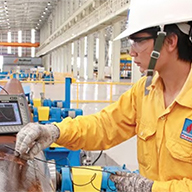[FTA Handbook] Overview of Vietnam’s FTAs 2023 - Part 3: Multilateral FTA and “new-generation” FTA
![[FTA Handbook] Overview of Vietnam’s FTAs 2023 - Part 3: Multilateral FTA and “new-generation” FTA [FTA Handbook] Overview of Vietnam’s FTAs 2023 - Part 3: Multilateral FTA and “new-generation” FTA](https://gl-m.linker-cdn.net/article/2023/Jul/3a7cd3acacc2217060c2eba59bb01919.png)
Export Sector
98 week ago — 6 min read
E. FTAs Classification
1. Based on signatory parties – participant members
Based on the number of members participating in the signing of FTAs, FTAs are divided into two categories:
Bilateral FTA: The FTA signed between two parties, aims to loosen trade restrictions between both sides, helping to expand business opportunities.
Example: Vietnam - Korea Free Trade Agreement (VKFTA) or Vietnam - Chile Free Trade Agreement (VCFTA)
Multilateral FTA: FTA signed between three or more parties.
For example, the Vietnam Free Trade Agreement - Eurasian Economic Union (VN - EAEU FTA) between Vietnam and the Eurasian Economic Union (EAEU - including the Russian Federation, the Republic of Belarus, the Republic of Kazakhstan, the Republic of Armenia and the Kyrgyz Republic).
Besides, based on the signatory party is a country or organization, and geographical area, FTAs can also be divided into two types:
Regional FTA: FTAs are signed between countries in the same regional organization.
Example: ASEAN Free Trade Area (AFTA)
FTA signed between an organization and a country: FTA is signed between an organization consisting of many member countries and one country.
Example: Vietnam - European Union Free Trade Agreement (EVFTA)
In some cases, this type of classification is indistinct. For example, an FTA between the European Union (EU, consisting of 27 member countries) or between the Eurasian Economic Union (EAEU, consisting of 5 member countries) and Vietnam can be considered a regional FTA, and also be considered a bilateral FTA. The classification depends on how the EU or EAEU is viewed as a unified entity or a combination of different economies.
2. Based on the scope and content of the commitment
Traditional FTA: FTA has been negotiated and signed in the early years, often with a narrow scope and limited degree of liberalization.
New generation FTA: FTA has been negotiated and signed in recent years, covers a wide scope and has a high degree of liberalization.
F. Traditional FTA and New Generation FTA
1. “New generation” FTA
The term "new generation FTA" was first used in 2007 for the FTAs that the European Union has negotiated with its trading partners. The lack of consensus among WTO members has led to a deadlock in the Doha negotiations since 2001. This is believed to be the main reason for pushing the EU to implement a new trade strategy which has been officially announced in 2006. Accordingly, the EU is committed to developing and enhancing bilateral trade relations with partners, to improve the trade competitiveness of EU countries globally. With that purpose, in 2007 the EU started negotiating rounds of “new generation” FTAs with countries that are its trading partners such as India, South Korea and ASEAN countries via a comprehensive approach, including many innovations in intellectual property, competition, investment, government purchases, or sustainable development.
Since then, the term "new generation FTAs" has been commonly used to distinguish FTAs that have a more comprehensive scope than those established in WTO agreements or traditional FTAs.
In addition to the FTAs between the EU and its trading partners such as EU-Japan, EU-ASEAN, EU-India, EU-Korea FTA, etc., FTAs that are negotiated later between major trading partners such as the Transatlantic Trade and Investment Partnership (T-TIP), the Comprehensive and Progressive Agreement for Trans-Pacific Partnership (CPTPP), etc., also apply this comprehensive approach. These are all considered "new generation" FTAs.
2. The difference between the traditional FTA and the new generation FTA
Traditional FTAs are distinguished from new-generation FTAs by three factors below:
Firstly, new-generation FTAs include “non-commercial” content. These contents were previously out of concern for the creation of trade barriers, so they were excluded from WTO negotiations. However, now in the new context, it is considered because it has an increasing influence on the trade activities of countries. The "non-commercial" issues can be labour, sustainable development, environment, good governance, etc.
Secondly, the new generation FTAs include more innovative content than traditional FTAs such as government purchases, investment, competition, promotion of small and medium enterprises, e-commerce, etc.
Thirdly, new-generation FTAs will handle more deeply than traditional FTAs on issues such as intellectual property rights, trade in services, trade in goods, rules of origin, etc. For example, compared to WTO agreements and traditional FTAs, the new generation FTAs have a broader and deeper level of commitment, which can commit the reduction of the tax to almost 0% for most goods and services without any exception.
Through the differences mentioned above, among Vietnam's Free Trade Agreements, four FTAs are considered "new generation FTAs" including the Comprehensive and Progressive Agreement for Trans-Pacific Partnership (CPTPP), Vietnam - EU Free Trade Agreement (EVFTA), Vietnam - United Kingdom Free Trade Agreement (UKVFTA), and Regional Comprehensive Economic Partnership Agreement (RCEP)
(to be continued)
Reference: Ministry of Industry and Trade, WTO Center
View Linh 's profile
Most read this week
Trending
Get Efficient at Taking Decisions
Lãnh đạo & Quản lý 15 week ago
The Art & Science of People Pleasing in Retail
Bán lẻ 18 week ago
Khởi nghiệp 18 week ago















Comments
Share this content
Please login or Register to join the discussion